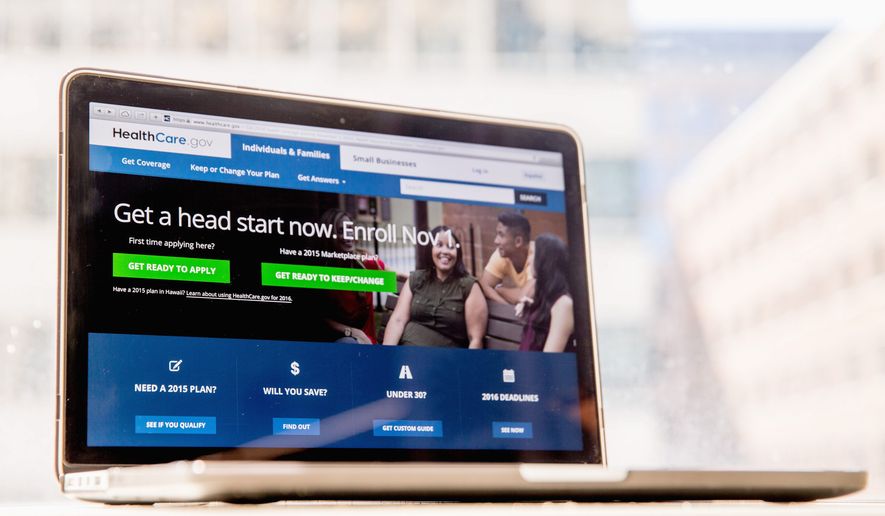The “public option” is the health care policy idea that won’t die.
Rejected during the 2009 Obamacare debate as too controversial and unnecessary, the public option — in which the government offers insurance that competes directly with private and nonprofit plans — has been resurrected this year by Democrats who say it’s the only way to rescue President Obama’s struggling health care law.
Pressured by Sen. Bernard Sanders, Democratic presidential nominee Hillary Clinton and Democrats down the ballot have embraced the idea. Even Mr. Obama has embraced it again, saying it should serve as a fallback plan in regions where company and nonprofit plans have failed.
“It’s just been an awful summer for Obamacare,” Robert Laszewski, a health care policy consultant in Alexandria, Virginia, said of the shift back to the public option. “I think what’s really intriguing is that the most committed Obamacare supporters are coming to the realization the exchanges are unsustainable and not working, and are in need of a fundamental fix.”
That realization has been fueled by a spate of bad news.
Health Republic of New Jersey, one of the nonprofit cooperatives set up instead of government-run plans, said it is shutting down operations. That leaves just six of the original 23 coops still running, despite more than $2 billion in federal loans to keep them afloat.
Meanwhile, major insurers such as UnitedHealth Group and Aetna have withdrawn from all but a handful of states, leaving nearly a third of U.S. counties with only a single company offering plans on their exchange markets next year, according to estimates from the nonpartisan Kaiser Family Foundation.
Republicans say those problems, along with skyrocketing premiums, are signs that the Affordable Care Act has failed and must be repealed.
Democrats, though, say it’s time to go bigger and give the government a more forceful role in providing coverage.
Rep. Chris Van Hollen, a Maryland Democrat with a commanding lead in his Senate bid, says a public option is the next logical step in health care reform as Mr. Obama falls short of his dream of universal coverage before leaving office.
“This would be an important step toward creating a Medicare for All System,” Mr. Van Hollen says on his campaign website.
More than six years ago, as Congress debated Mr. Obama’s health care reforms, the House passed a bill that included the public option, but the idea was stripped by centrist Senate Democrats, who feared the party was trying to do too much or that a public plan would break the federal budget.
The final Obamacare legislation, written by the Senate, had the government set standards and organize markets but relied on private companies to provide the choices for consumers. The hope was that companies would compete for business, lowering costs for Americans even as they covered millions more people.
Six years later, though, the experiment looks faulty. While sick consumers have signed up, healthy Americans have balked, skewing the economics, forcing premium hikes and chasing some companies from the market altogether, saying they couldn’t take the revenue losses.
That has undercut competition, as has the loss of most of the coops.
What a public option would look like remains unclear.
One proposed version is akin to federally run Medicare: The government acts as an insurer, and patients choose their providers. Another version would have the government contract with private companies to set up doctor networks or handle other aspects of running the plan, said Elizabeth Carpenter, senior vice president at Avalere Health, a Washington-based consultancy.
“There are a lot of details yet to be determined,” she said.
The public option could face resistance from doctors and hospitals, which are better paid by private insurers than government health care programs. Insurers that remain on the exchanges might balk at competing with a government-run plan, saying it would effectively set rates in the open market.
The nation’s top insurer lobby, America’s Health Insurance Plans, said the public option isn’t a cure-all and that Congress would be better off helping the private plans by stabilizing the exchanges.
“Imposing a public option — even a limited one at that — is bound to fail,” AHIP spokeswoman Clare Krusing said. “Not only does it undermine the fundamental goals of what everyone is trying to achieve in health care — more choices for consumers and greater value in care delivery — but we’ve already seen the consequences for consumers with the collapse of several co-ops.”
Workability aside, the politics are also still tough for Democrats, who would have to make massive gains in the House and Senate and win the White House in order to make a public option viable.
Republicans, meanwhile, are hoping to forge a replacement bill from a blueprint released this year by House Speaker Paul D. Ryan of Wisconsin.
“Democrats know they can’t possibly get [the public option] through the Congress. You’ve got to have 60 votes in the Senate, you’ve got to have the House of Representatives,” Mr. Laszewski said. “This is the equivalent of Republicans saying, ‘Repeal and replace.’”
• Tom Howell Jr. can be reached at thowell@washingtontimes.com.




Please read our comment policy before commenting.